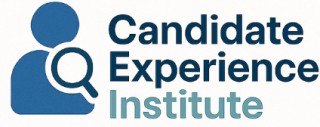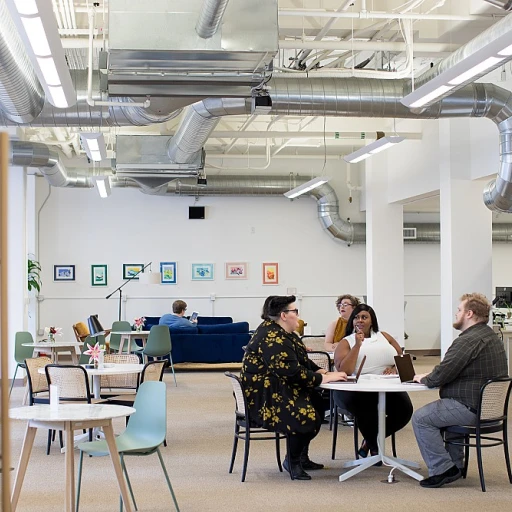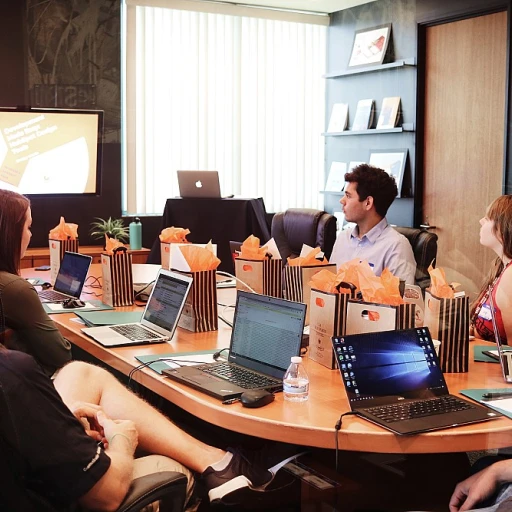
Understanding the Importance of Career Development
Significance of Career Development in Modern Workplaces
Today's corporate landscape is more competitive than ever, and organizations are constantly seeking ways to maintain a competitive edge. Career development has emerged as a crucial element in achieving this goal, providing both the business and its employees with numerous benefits. It's not just about the individual growth of employees but the company's success as a whole. When a company invests in comprehensive development programs, it not only helps employees acquire new skills and improve existing ones but also stimulates motivation and job satisfaction. This leads to an enhanced employee experience, which can result in numerous long-term benefits, such as reduced turnover and increased loyalty. Furthermore, career development programs are vital in aligning employee goals with the organization's objectives, ensuring both parties are working toward common ambitions. Through structured learning and growth opportunities, employees can build a personalized development plan that aligns with their career paths, fostering both short-term achievements and steady career progression. Additionally, offering robust employee development plans encourages a culture of continuous learning and innovation. It empowers team members to take initiative in upskilling themselves, thus contributing directly to the organization's success. Coupled with well-structured employee training and diverse growth opportunities, it can significantly bolster a company's position in the marketplace. With the right career growth strategies, employees are more likely to stay invested in their roles, contributing positively to overall business performance. This dynamic not only benefits the employees through personal and professional development but also allows the company to fill critical roles with skilled, trusted individuals. For more insights on how technology can aid in enhancing these training programs, consider exploring the advantages of a learning management system demo. Such systems offer a robust platform for delivering tailored training content, tracking progress, and evaluating the effectiveness of development programs.Assessing Organizational Needs and Goals
Evaluating Organizational Requirements
Before delving into the intricacies of designing effective career development programs, organizations must align these initiatives with their specific needs and strategic goals. This alignment ensures that both the company and its employees benefit from the programs. Determining clear development objectives is the first crucial step to drive career progression effectively.
Companies need to begin by assessing their current workforce capabilities and identifying any skill gaps that might hinder their growth. This involves a thorough analysis of the skills required for the success of the business and comparing them with the existing competencies among employees. Understanding the skill gaps will help in crafting training and development paths tailored to employee growth.
Furthermore, understanding the long-term vision of the organization plays a key role in shaping the career plans. This involves asking critical questions like:
- What are the future goals and objectives of the business?
- Which emerging industry trends might impact the company?
- What kind of job roles will be pivotal in meeting these objectives?
In this context, it's also vital to consider the aspirations and career goals of employees. Employee feedback through surveys or interviews can provide insights into their professional ambitions and desired growth opportunities. Meeting both organizational needs and employee desires can create a harmonious environment conducive to effective development.
As organizations take steps to fill skill gaps and create career development plans, they must not overlook the importance of a dynamic feedback loop. Feedback mechanisms will allow a constant flow of information regarding the effectiveness of current strategies and interventions. Keeping communication lines open within development programs can greatly enhance their success.
Understanding these organizational requirements is pivotal to steering employee growth and ensuring the success of programs aimed at bolstering skills and providing robust professional development opportunities. For further insights into effectively navigating job transitions within the industry, check this navigating temporary job shifts resource.
Designing a Comprehensive Career Development Framework
Constructing a Robust Career Development Framework
To build a structure that encourages growth, organizations must tailor their career development framework to meet strategic business objectives while fostering employee career growth. This process requires a comprehensive approach to create a coherent pathway that aligns with both organizational and individual aspirations. One of the primary steps in designing an effective framework is to clearly define the goals of the development programs. By aligning these goals with the company's overall mission and strategy, organizations ensure that their efforts in employee development contribute significantly to long-term success. It's essential to identify key areas where skills enhancement is necessary and align these with potential job opportunities in Danville, KY that are relevant and valuable. Determining the skills and competencies that need to be developed across various departments is crucial. This involves identifying any skill gaps that exist and designing training programs that address these deficiencies. Incorporating professional development opportunities into the framework can help employees enhance their abilities, catering to their ambitions and the company's needs. Organizations must also ensure that they establish diverse career paths for their team members. A well-structured framework will outline clear career progression routes. This offers employees transparency and motivation, knowing the milestones they need to achieve for career advancement. Another critical component is to provide plentiful learning and growth opportunities. By implementing regular evaluations and feedback mechanisms, organizations can adapt their frameworks to evolving business and employee needs. This ongoing refinement ensures employee development plans remain relevant and effective. Moreover, deploying mentorship initiatives and employee training programs can play a pivotal role in supporting an organization's development plan. This includes creating a culture of continuous learning which empowers employees not only to fulfill their current role's requirements but also to prepare for future roles that may arise within the company. In conclusion, crafting a robust career development framework requires a strategic alignment of employee growth initiatives with organizational goals. This ensures a win-win scenario where both the company and its workers can thrive together.Implementing Training and Mentorship Initiatives
Promoting Skill Enhancement through Training
To ensure the success of career development programs within a corporation, the implementation of robust training and mentorship initiatives is paramount. These not only enhance the skills of employees but also align with the company's goals, offering opportunities for career growth. Training programs serve as a foundational element in bridging the gap between current skills and future needs. By promoting professional development and offering structured employee training opportunities, organizations can significantly enhance employee growth and satisfaction.- Skill Building Workshops: Regular workshops can address specific job-related skills and knowledge gaps, thus empowering employees to excel in their roles and work towards their career progression.
- On-the-Job Learning: Encouraging learning opportunities within the workplace allows employees to integrate new skills directly into their job functions, benefiting both the individual and the organization.
Creating a Culture of Mentorship
Mentorship initiatives are vital in creating personalized development paths for team members. By pairing less experienced employees with seasoned professionals, mentorship doesn't just impart knowledge but also cultivates a supportive environment where employees feel valued and motivated to pursue long-term career goals.- Mentor-Mentee Programs: Establishing formal mentor-mentee relationships helps individuals gain insights beyond their immediate roles, enhancing their growth opportunities.
- Reverse Mentoring: This innovative approach allows younger employees to mentor their seniors, facilitating an exchange of modern skills and fresh perspectives.
Monitoring and Tweaking the Programs
Evaluation is crucial for refining these initiatives. Continuous assessment helps identify areas of improvement, ensuring that the training and mentorship programs align with the overall career development framework, effectively preparing employees for future leadership roles.- Feedback Mechanisms: Establishing regular feedback channels empowers employees to share their experiences and suggest enhancements for development plans.
- Progress Tracking: Utilizing performance metrics can aid in measuring the effectiveness of training development and ensuring it supports the growth of the organization.
Measuring the Success of Career Development Programs
Evaluating the Impact of Development Programs
Measuring the success of career development initiatives in an organization requires a systematic approach to understand their effectiveness and the value they add to employee growth. Companies should aim to generate tangible outcomes that align with both the organization's goals and employees' career aspirations. One effective method is to set clear benchmarks at the outset of the development program. These benchmarks serve as reference points that allow the organization to track the progress of employees and the overall impact on business goals. While setting these parameters, consider the specific skills and competencies that need enhancement, ensuring they fill the gap between current capabilities and future goals. Monitoring the progression of employees through objective assessments and feedback mechanisms is crucial. Evaluation should extend beyond mere completion of training programs, focusing instead on how these initiatives contribute to individual career growth and the wider organization. This involves periodic reviews and feedback sessions with team members to gauge the alignment of personal career goals with the company’s strategic plan. Further, KPIs (Key Performance Indicators) should be established to assess how effectively training and mentoring have enhanced employee capabilities. Enhanced job performance, increased productivity, and improved employee retention are potential indicators of successful employee training and development. According to various studies, companies with effective career development frameworks experience a more engaged workforce, leading to higher job satisfaction and reduced turnover rates. These metrics highlight the critical correlation between structured development programs and employee growth opportunities. By focusing on these areas, organizations can refine their approaches to training development and ensure that initiatives translate into measurable success, helping employees achieve their long-term career paths while propelling the business forward.Overcoming Challenges in Career Development Implementation
Overcoming Implementation Hurdles
Creating and implementing effective career development programs can be challenging, but addressing these obstacles is crucial for employee development and overall organizational growth. Here are some common barriers and strategies to overcome them:- Resource Allocation: Organizations often struggle with allocating sufficient resources, such as budget and personnel, to support training programs and career progression initiatives. A clear business case that aligns career development objectives with the company's long-term goals can help secure necessary resources.
- Lack of Managerial Support: Without active support from management, programs may falter. Ensuring that leaders understand the benefits of professional development and equipping them with the necessary tools to encourage employee growth can significantly help. This might include leadership training for managers themselves.
- Resistance to Change: Employees and management alike might resist new programs or changes to existing plans. Communication is key, emphasizing the growth opportunities and career paths available. Highlight how these initiatives align with the individual's and organization's objectives.
- Identifying Relevant Training: Determining the appropriate skillsets for development can be challenging. A well-structured assessment of organizational needs can help in creating a tailored development plan. Additionally, feedback from team members can guide the identification of relevant training courses.
- Consistency and Follow-through: Career development efforts can lose momentum without consistent follow-up. Establishing regular reviews of employee growth and development plans ensures program goals are met and adjustments are made as needed.













